Cannabidiol sensitizes TRPV2 channels to activation by 2-APB
- PMID: 37199723
- PMCID: PMC10195083
- DOI: 10.7554/eLife.86166
Cannabidiol sensitizes TRPV2 channels to activation by 2-APB
Abstract
The cation-permeable TRPV2 channel is important for cardiac and immune cell function. Cannabidiol (CBD), a non-psychoactive cannabinoid of clinical relevance, is one of the few molecules known to activate TRPV2. Using the patch-clamp technique, we discover that CBD can sensitize current responses of the rat TRPV2 channel to the synthetic agonist 2-aminoethoxydiphenyl borate (2-APB) by over two orders of magnitude, without sensitizing channels to activation by moderate (40°C) heat. Using cryo-EM, we uncover a new small-molecule binding site in the pore domain of rTRPV2 in addition to a nearby CBD site that had already been reported. The TRPV1 and TRPV3 channels are also activated by 2-APB and CBD and share multiple conserved features with TRPV2, but we find that strong sensitization by CBD is only observed in TRPV3, while sensitization for TRPV1 is much weaker. Mutations at non-conserved positions between rTRPV2 and rTRPV1 in either the pore domain or the CBD sites failed to confer strong sensitization by CBD in mutant rTRPV1 channels. Together, our results indicate that CBD-dependent sensitization of rTRPV2 channels engages multiple channel regions, and that the difference in sensitization strength between rTRPV2 and rTRPV1 channels does not originate from amino acid sequence differences at the CBD binding site or the pore domain. The remarkably robust effect of CBD on TRPV2 and TRPV3 channels offers a promising new tool to both understand and overcome one of the major roadblocks in the study of these channels - their resilience to activation.
Keywords: TRP channel; TRPV1; TRPV3; cannabinoids; channel sensitization; gating; molecular biophysics; mouse; neuroscience; rat; structural biology.
Conflict of interest statement
AG, XT, HC No competing interests declared, CB Currently affiliated with Janssen R&D. The author has no financial interests to declare, KS Senior editor, eLife, AJ Reviewing editor, eLife
Figures




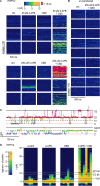
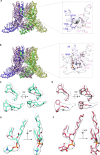

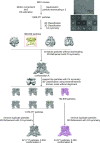
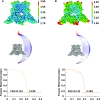

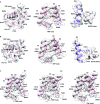

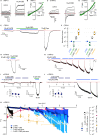

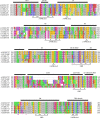
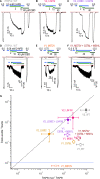

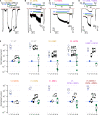
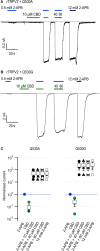
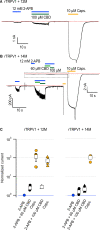
Update of
-
Cannabidiol sensitizes TRPV2 channels to activation by 2-APB.bioRxiv [Preprint]. 2023 Jan 27:2023.01.27.525817. doi: 10.1101/2023.01.27.525817. bioRxiv. 2023. Update in: Elife. 2023 May 18;12:e86166. doi: 10.7554/eLife.86166. PMID: 36747846 Free PMC article. Updated. Preprint.
References
-
- Adams PD, Afonine PV, Bunkóczi G, Chen VB, Davis IW, Echols N, Headd JJ, Hung L-W, Kapral GJ, Grosse-Kunstleve RW, McCoy AJ, Moriarty NW, Oeffner R, Read RJ, Richardson DC, Richardson JS, Terwilliger TC, Zwart PH. PHENIX: a comprehensive python-based system for macromolecular structure solution. Acta Crystallographica. Section D, Biological Crystallography. 2010;66:213–221. doi: 10.1107/S0907444909052925. - DOI - PMC - PubMed
-
- Belkacemi A, Trost CF, Tinschert R, Flormann D, Malihpour M, Wagner C, Meyer MR, Beck A, Flockerzi V. The TRPV2 channel mediates Ca2+ influx and the δ9-THC-dependent decrease in osmotic fragility in red blood cells. Haematologica. 2021;106:2246–2250. doi: 10.3324/haematol.2020.274951. - DOI - PMC - PubMed
-
- Bisogno T, Hanuš L, De Petrocellis L, Tchilibon S, Ponde DE, Brandi I, Moriello AS, Davis JB, Mechoulam R, Di Marzo V. Molecular targets for cannabidiol and its synthetic analogues: effect on vanilloid VR1 receptors and on the cellular uptake and enzymatic hydrolysis of anandamide. British Journal of Pharmacology. 2001;134:845–852. doi: 10.1038/sj.bjp.0704327. - DOI - PMC - PubMed
Publication types
MeSH terms
Substances
LinkOut - more resources
Full Text Sources

